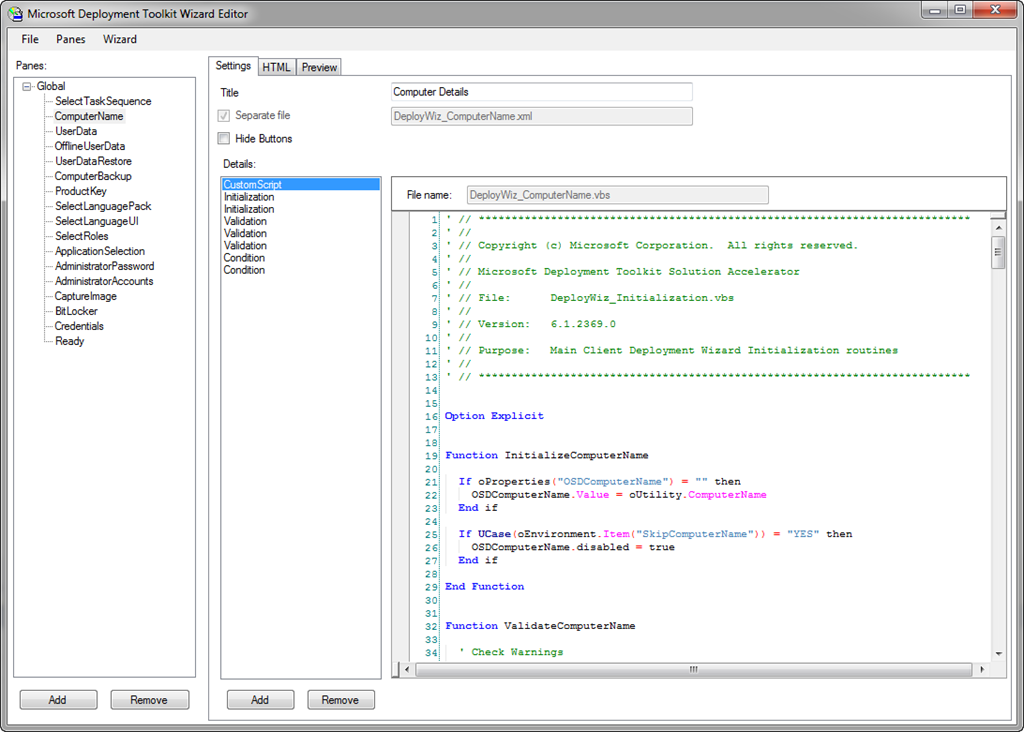
So why does that cause problems with the Wizard Editor? Simple: It doesn’t understand that the wizard pane body is in a separate file.
#Mdt checkbox application wizard full#
running just that one single wizard pane without going through a full deployment.) (This helps with the testing as well: By keeping the conditions in the DeployWiz_Definition_ENU.xml file instead of in the individual wizard files, those conditions don’t get in the way of “offline testing”, e.g. If you look at this file, you’ll see that it’s pretty short, with entries like this:Īll that is there is a reference (or link) to the separate files for each wizard pane, along with the conditions for when each wizard pane should be displayed.

The individual panes are then tied together by the DeployWiz_Definiton_ENU.xml file. Additionally, it makes the wizard easier to test, as you can work on a single pane at a time without worrying about breaking another unrelated pane. It’s now much more obvious what script pieces are used for which wizard panes.
#Mdt checkbox application wizard code#
Why was this done? Mainly because it makes the wizard code much easier to maintain. The original files (DeployWiz_Definition_ENU.xml, etc.) are still around, but are much smaller – the bulk of the content has been separated out. DeployWiz_ComputerName.xml and DeployWiz_ComputerName.vbs). Instead of having one set of large files (DeployWiz_Definition_ENU.xml, DeployWiz_Initialization.vbs, DeployWiz_Validation.vbs), there are now separate files for each wizard pane (e.g. That’s because the entire wizard has been restructured. So what causes this? Well, if you look at the files in the deployment share, you’ll notice that there are quite a few more that start with “DeployWiz”. You can open the file, but as soon as you click on one of the wizard panes in the left-hand column, you get this exception: But you’ll quickly discover that you can’t get very far. So it’s quite reasonable for you to try the same thing with MDT 2012. Test out all the changes using the MDT Wizard Editor, or if this isn’t possible (due to conditions on the wizard pane or logic contained in the pane itself) drop the changed files into the deployment share and try a deployment.

Using Notepad or any other text editor, add any custom scripting to DeployWiz_Initialization.vbs or DeployWiz_Validation.vbs. Open the “DeployWiz_Definition_ENU.xml” file and make the necessary changes: Adding new panes, changing the HTML and properties of existing pane, etc. This makes editing the wizard simpler (although not necessarily trivial – there can still be a fair amount of work to do, depending on the extent of the changes that you intend to make). But the process is going to be slightly different with MDT 2012.įirst, let’s review the basic process most of you would go through with MDT 2010: Many of you have customized the MDT 2010 wizards, and I expect that will be fairly common with MDT 2012 as well – after all, one of the design goals with having HTA-based wizards is to enable customization by creative IT pros. First published on TechNet on Jan 07, 2012


 0 kommentar(er)
0 kommentar(er)
